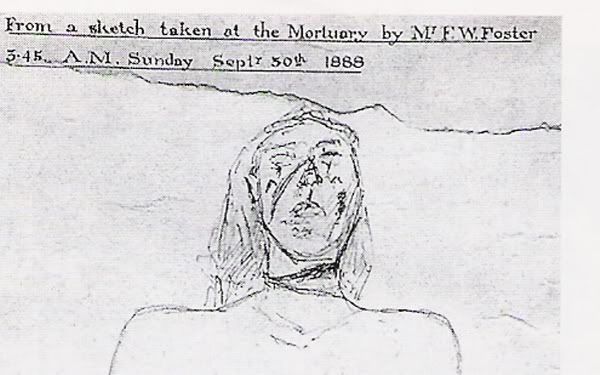Hunter.
I am well aware of the traditional interpretation, but all cuts begin by 'just breaking the skin' (superficial). So what I am suggesting is that we may have assumed wrongly that there was only one cut.
That Dr Brown was actually describing a superficial cut from end to end, and then subsequent deeper wounds.
Dr Brown's original observations (C. L. R. O. No. 135) on the wounds to the throat are not given in one continuous sentence, but comprise of individual statements broken by hyphens.
The press reports, and subsequently most authors, tend to leave out the hyphens, as a result Brown's observations are merged together as if in one continuous sentence.
Foster's drawing also shows two diagonal cuts.

I don't think we can so readily dismiss the possibility of two cuts being described.
Regards, Jon S.
I am well aware of the traditional interpretation, but all cuts begin by 'just breaking the skin' (superficial). So what I am suggesting is that we may have assumed wrongly that there was only one cut.
That Dr Brown was actually describing a superficial cut from end to end, and then subsequent deeper wounds.
Dr Brown's original observations (C. L. R. O. No. 135) on the wounds to the throat are not given in one continuous sentence, but comprise of individual statements broken by hyphens.
The press reports, and subsequently most authors, tend to leave out the hyphens, as a result Brown's observations are merged together as if in one continuous sentence.
Foster's drawing also shows two diagonal cuts.

I don't think we can so readily dismiss the possibility of two cuts being described.
Regards, Jon S.




Comment